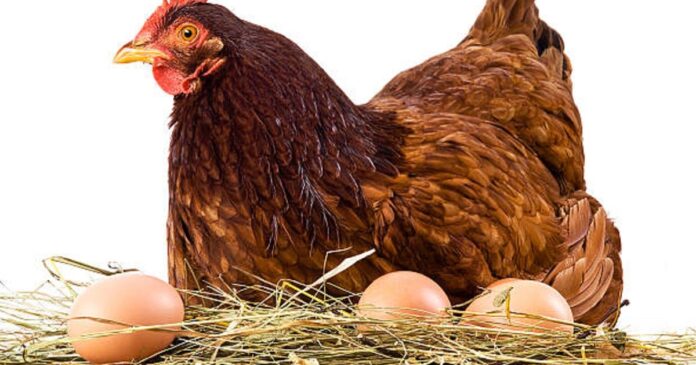Layers are the type of chicken kept purposely for laying eggs. Poultry egg production cycles last for between 52-56 weeks. Within this period a number of factors may influence egg production. These factors may determine the quantity and quality of the egg produced. It is, therefore, important that the cycle is very well-managed. To increase production and profitability.
Factors Affecting Poultry Egg Production
Want to know the factors that influence poultry egg production? Read on.
1. Breed
Some chicken breeds naturally have more capacity to produce more eggs than others. However, in poultry egg production, proper management and feeding practices are more important in determining egg production.
Read also: 10 Productive Chicken Breeds for Backyard and Commercial Production
2. Age
Poultry egg production usually begins at the 20th or 21st week. Production continues for slightly over a year. Egg size tends to increase from the beginning of laying until the end of the egg production cycle.
3. Mortality rate
Mortality in poultry may be caused by disease, predation or unfavourable housing conditions. Average mortality in a chicken farm for young chicks (up to 8 weeks old) in about 4%, growers (between 8 weeks and 20 weeks old) is about 15% and layers (between 20 and 72 weeks old) is about 12%. In a year the average mortality rate of the flock is between 20 and 25%. Above this percentage, then there is a definite effect on poultry egg production.
4. Bodyweight
Generally, the optimum body weight of a chicken during the laying period is about 1.5kg. This, however, varies according to breed. When the chicken is either underweight or overweight, they tend to lay eggs at a lower rate. You can correct this by good management and the right amount of feed to make optimum body weight.
Read also: Site Selection for Farming Purposes: 7 Very Key Factors to Consider
5. Laying house
You must provide all the necessary conditions in the laying house needed for the optimum production of eggs by the chicken. Therefore, it is necessary to build the laying house to suit local climatic conditions and the farmers’ finances. Characteristics of a good laying house include protection from theft, direct sunlight, rain, excessive wind, heat and cold and sudden changes in temperature and excessive dust. The laying must be constructed in a way that allows you to control temperature during hot and cold periods. The design should also make it easier to work and take care of the birds inside the housing.
6. Lighting schedule
Length of daylight has an effect on egg production. Therefore, a longer day means an increase in egg production. In the tropics, open houses are commonly used and artificial lighting may be used. Artificial lights can be introduced for 2 to 3 hours when darkness falls, to increase the laying period. This can increase egg production by 20 to 30%.
In closed laying houses, layers are not exposed to natural light. In this case, the length of the artificial day should be increased in steps until the artificial day reaches 16 to 17 hours. This will make sure there is constant and maximum egg production. Do not decrease during the laying period.
7. Water and Feed
You must always provide fresh and clean water for the layer. The layer consumes up to a quarter of a litre of feed per day. Note that, the local free-range chicken will produce more meat and eggs if they are given supplementary feed if they are improved or crossbreed.
8. Eggs collection
Egg production can reduce when eggs are damaged or eaten by the chicken and this translates into a reduction in income. When you collect eggs often, you prevent them from damage, dirt or from being eaten by the chicken. Dirt reduces the quality of the eggs.
Read also: 7 Tips on Profitable Farming with Good Records Keeping
9. Culling
Culling is removing of undesirable, ie sick and/or unproductive birds, from the flock. There are two methods.
- Mass culling – removing the entire flock and replacing at the end of the laying cycle;
- Selective culling – removing only individual unproductive or sick birds.
Culling helps to maintain high levels of poultry egg production and prevent the wastage of feed on unproductive birds and the spread of disease.
10. Climate and Temperature
The ideal laying temperature is between 11°C and 26°C. A humidity level above 75% causes a reduction in egg-laying.
The table indicates the effect of temperature on egg production.
| Temperature (°C) |
Effects |
| 11 – 26 | Good production. |
| 26 – 28 | Some reduction in feed intake. |
| 28 – 32 | Feed consumption reduced and water intake increased; eggs of reduced size and thin shell. |
| 32 – 35 | Slight panting. |
| 25 – 40 | Heat prostration sets in, measures to cool the house must be taken. |
| 40 and above | Mortality due to heat stress. |
Above 28°C, the production and quality of eggs decrease. Seasonal temperature increases can reduce egg production by about 10%.
11. Vaccination and disease control
Diseases can cause high mortality in chickens which may reduce egg production. Directly, some diseases and parasites can reduce the capacity of the chicken to produce eggs. Vaccination is one way of preventing diseases in poultry. Vaccinations are administered to chicken by injection, water intake, eye drops and spraying. Keep clean and hygienic around the poultry housing and surroundings to eliminate 90% of all disease occurrences.
Read also: 14 Major Chicken Diseases, Symptoms, Prevention and Treatments
12. Management factors
Most definitely, effective and efficient management is very vital to increase the productivity of the chicken and so increase income. This includes proper housing, feeding, careful keeping and treatment of the chicken.
In summary
Every poultry farmer should take these points seriously if they are going to get good returns from their layer production.
Reference
Egg production – (fao.org)


